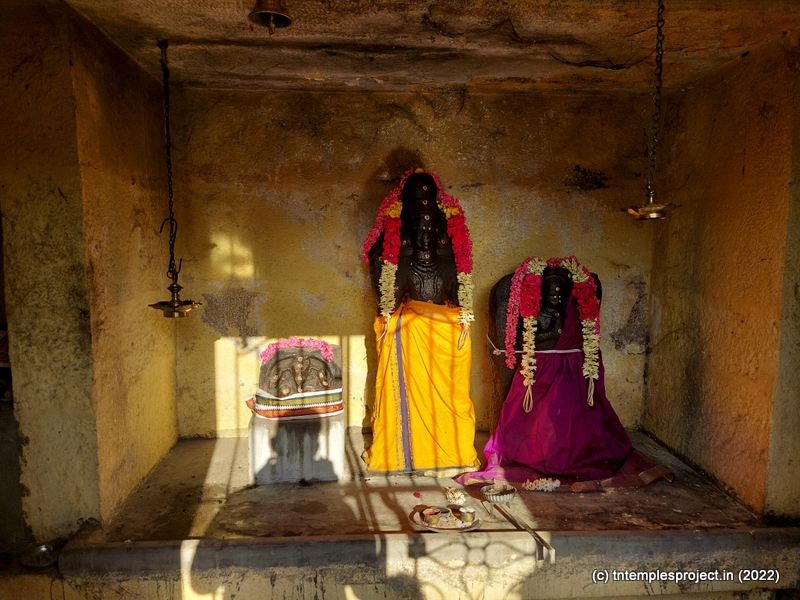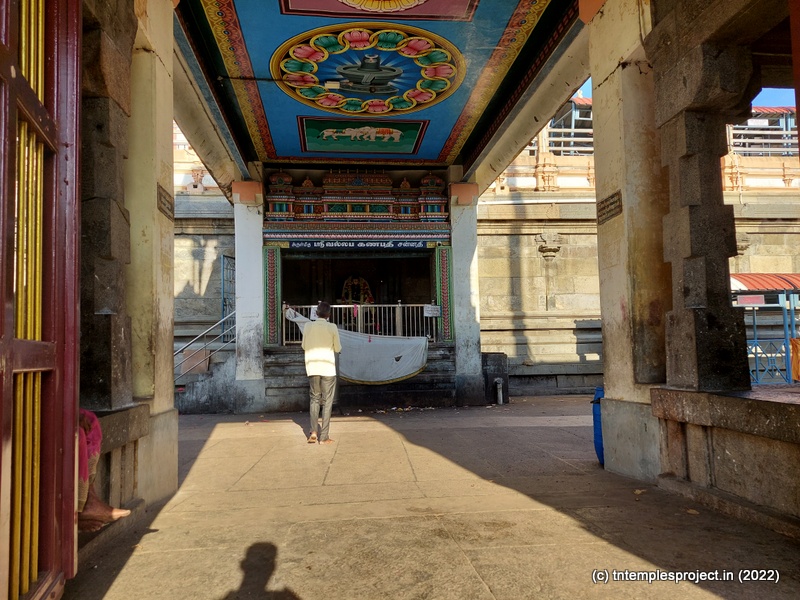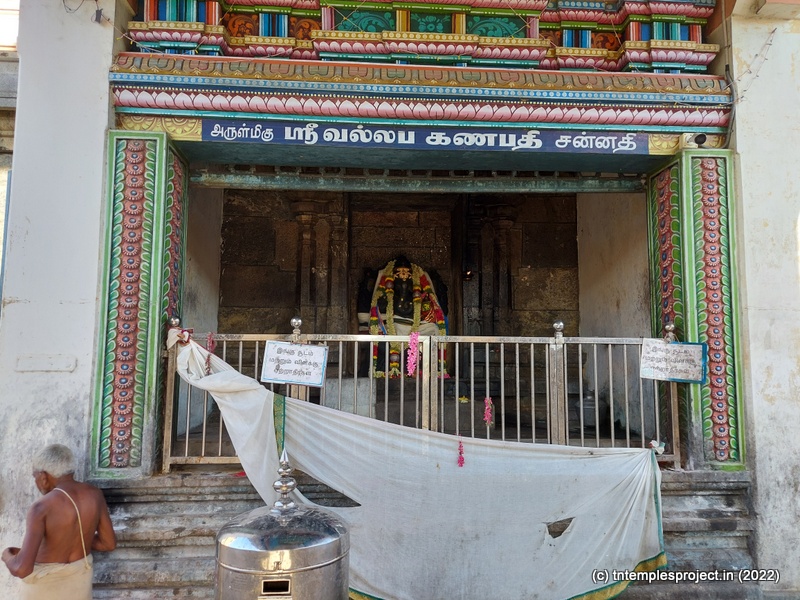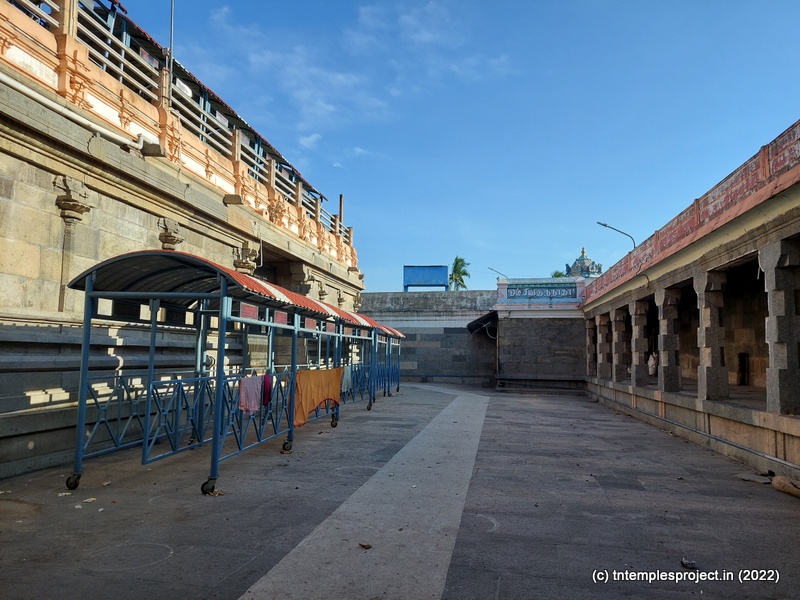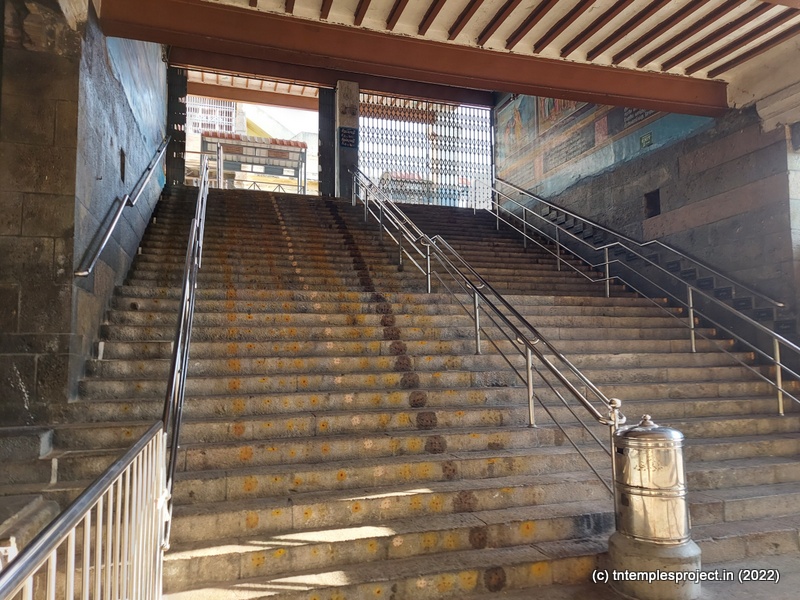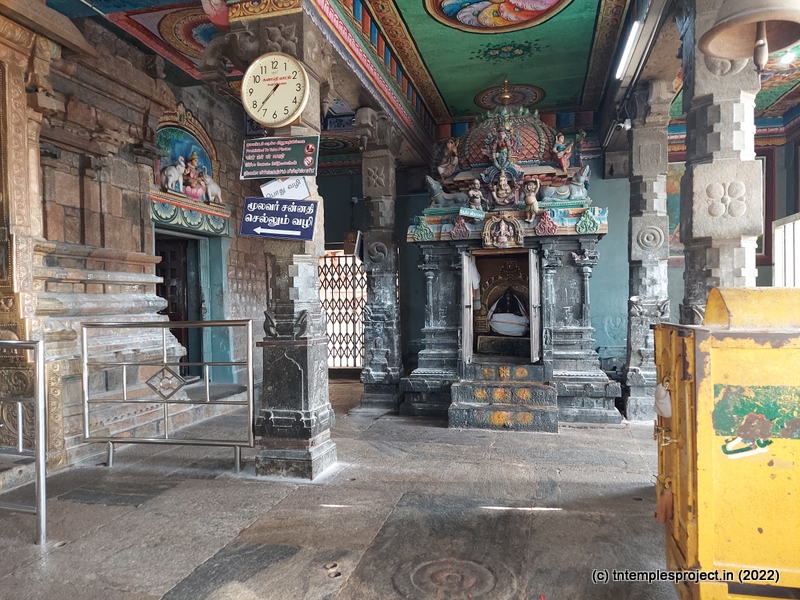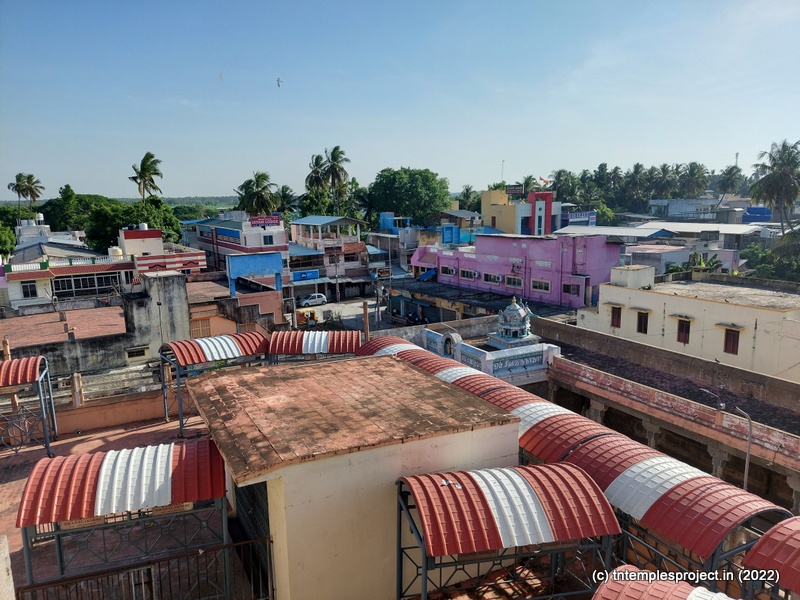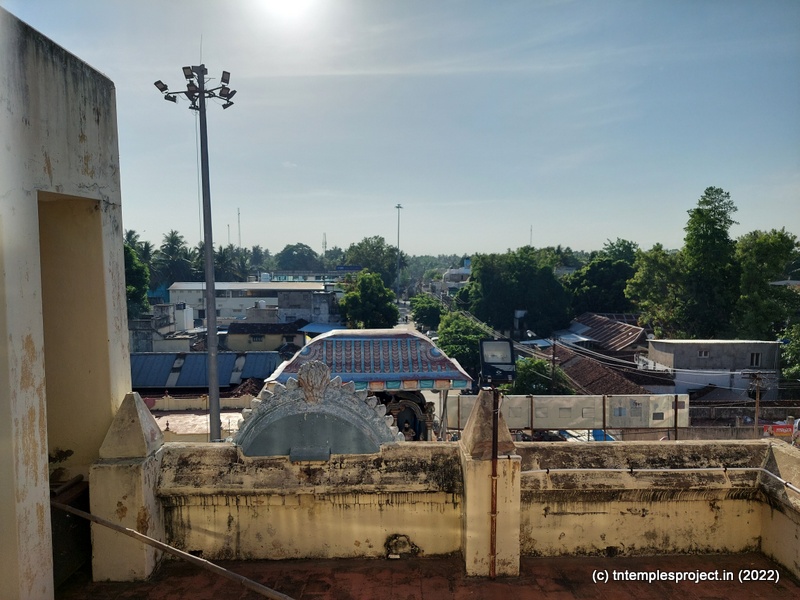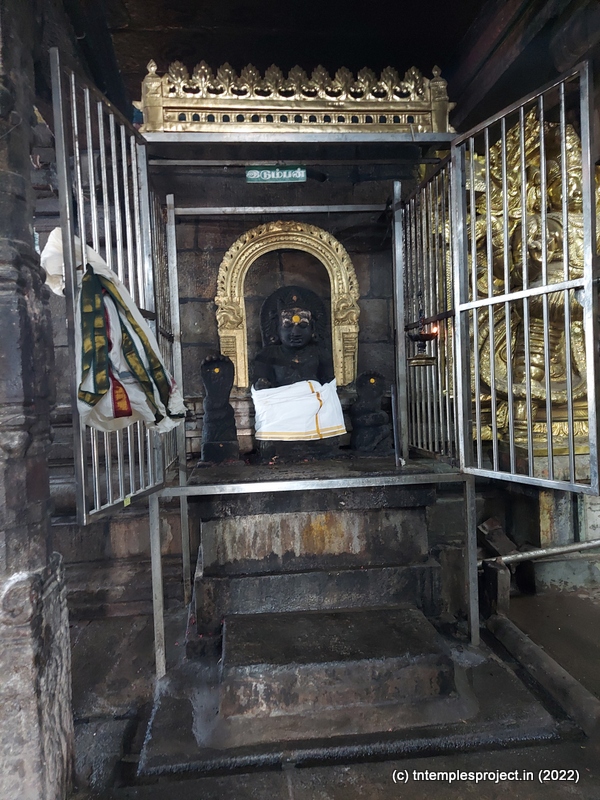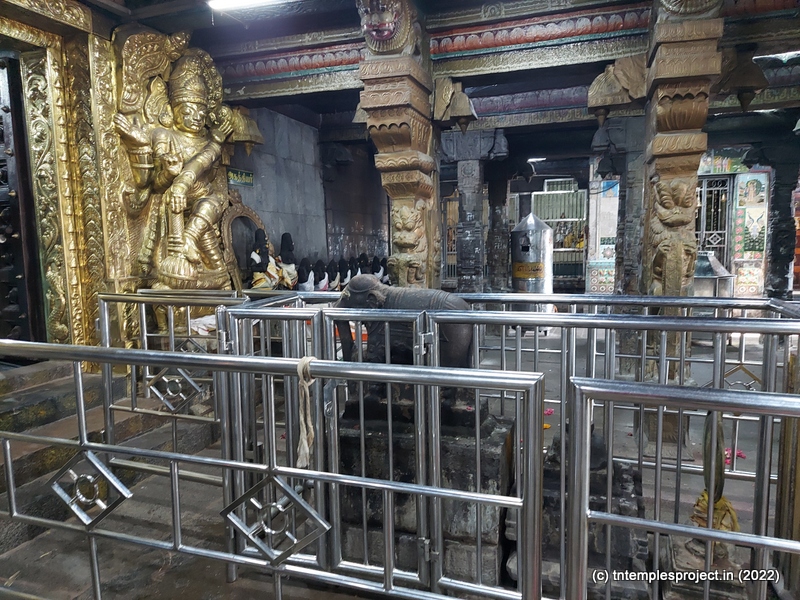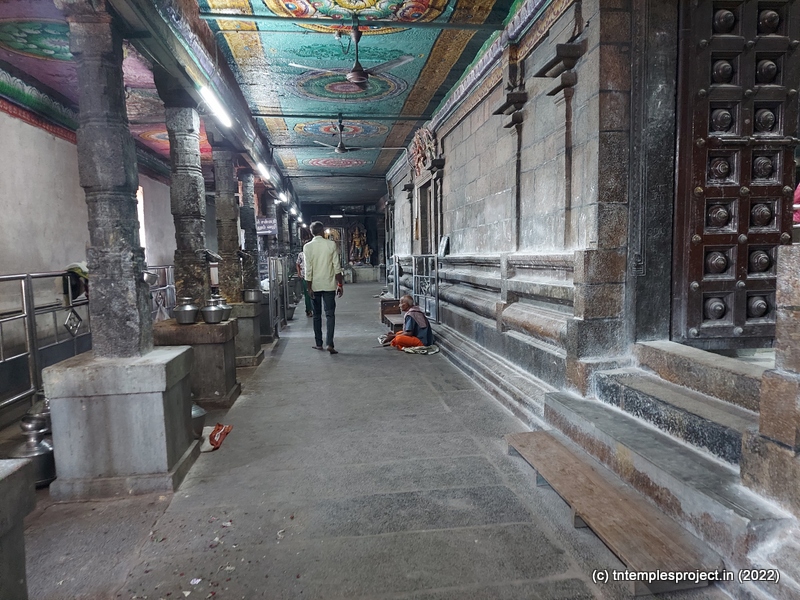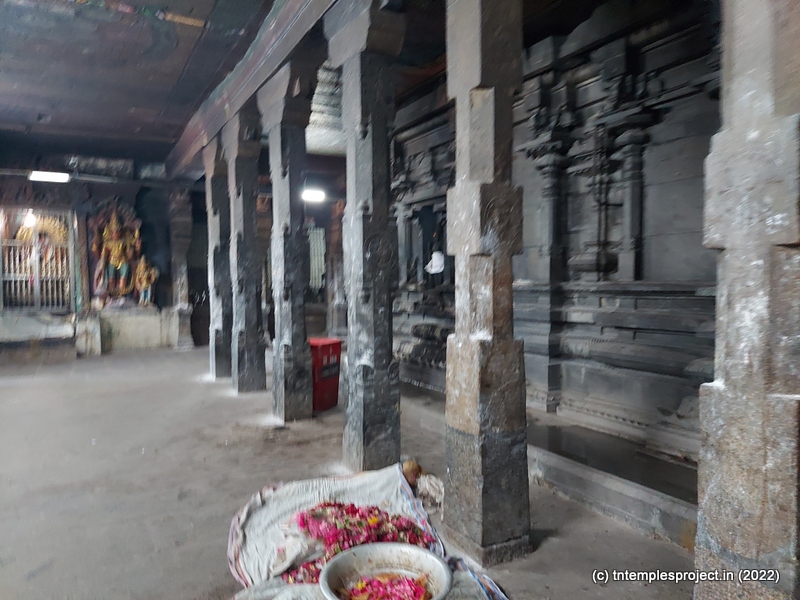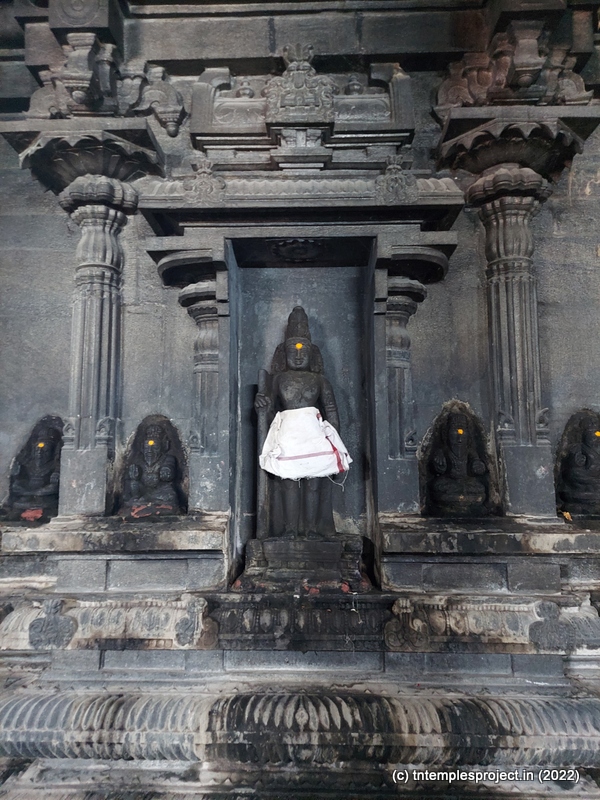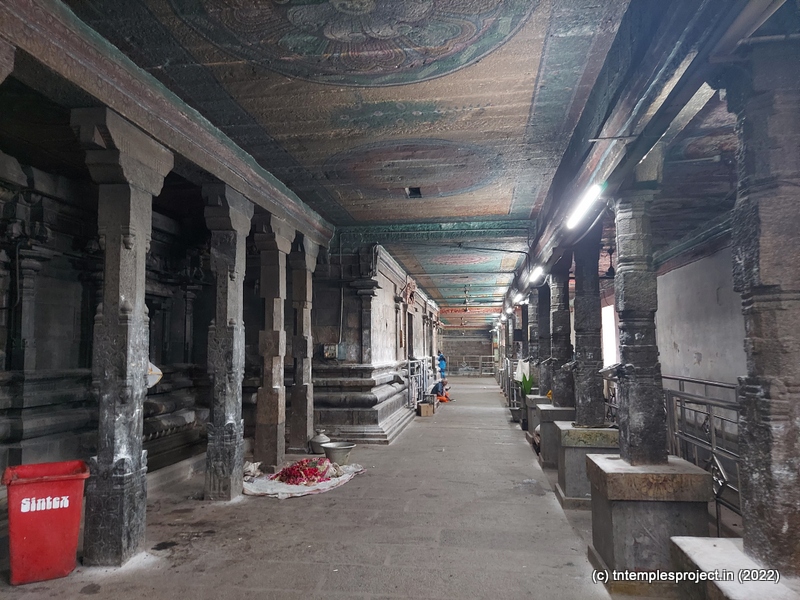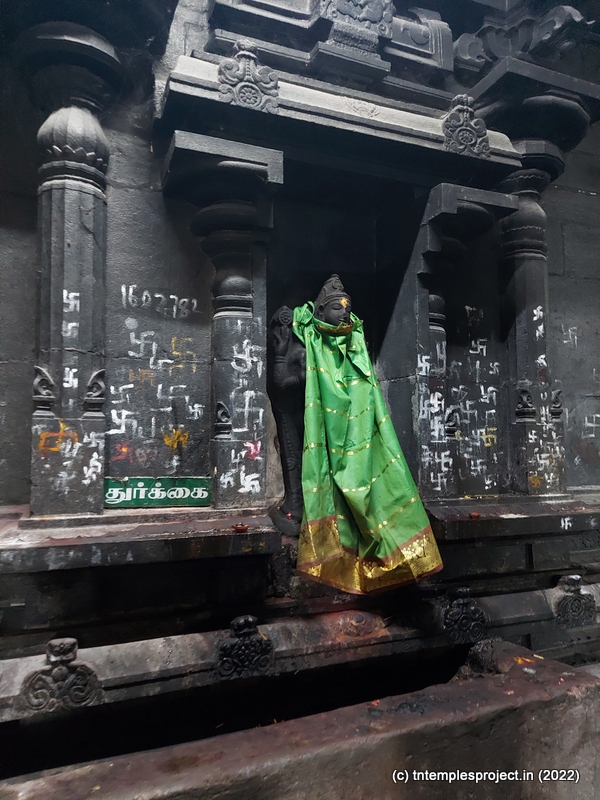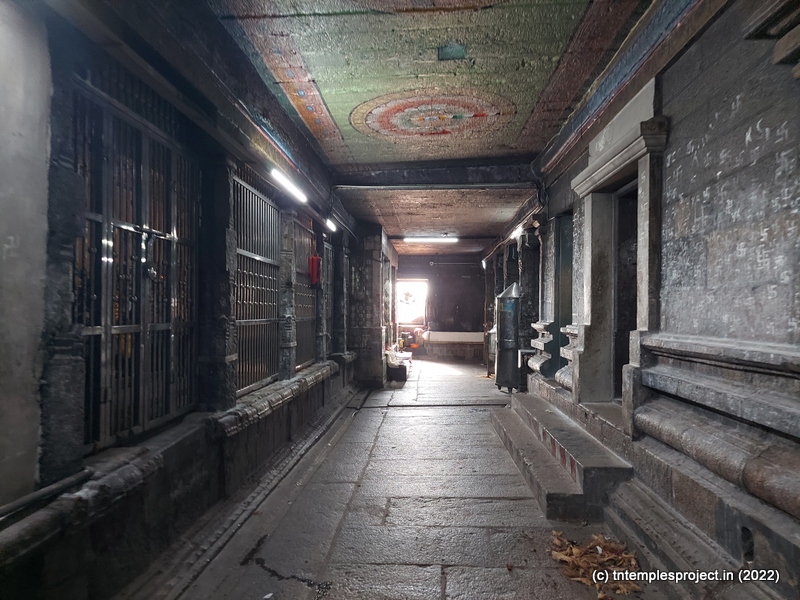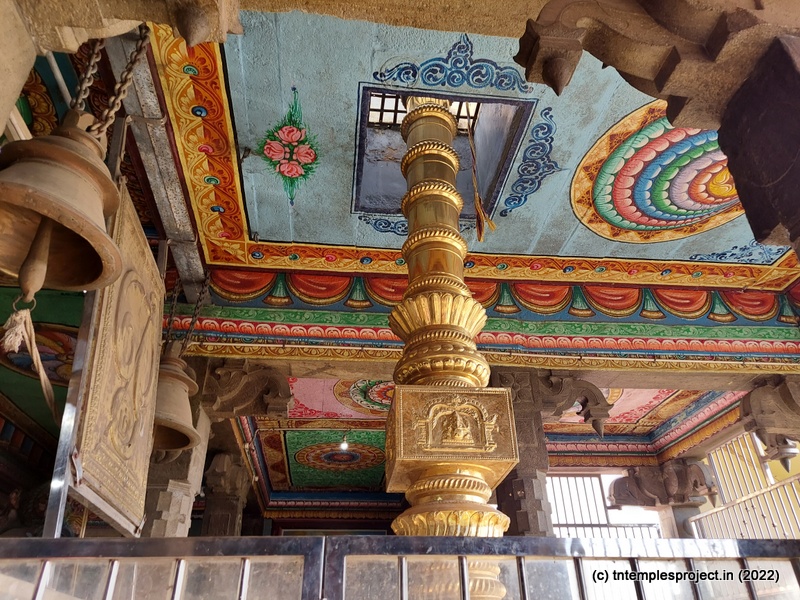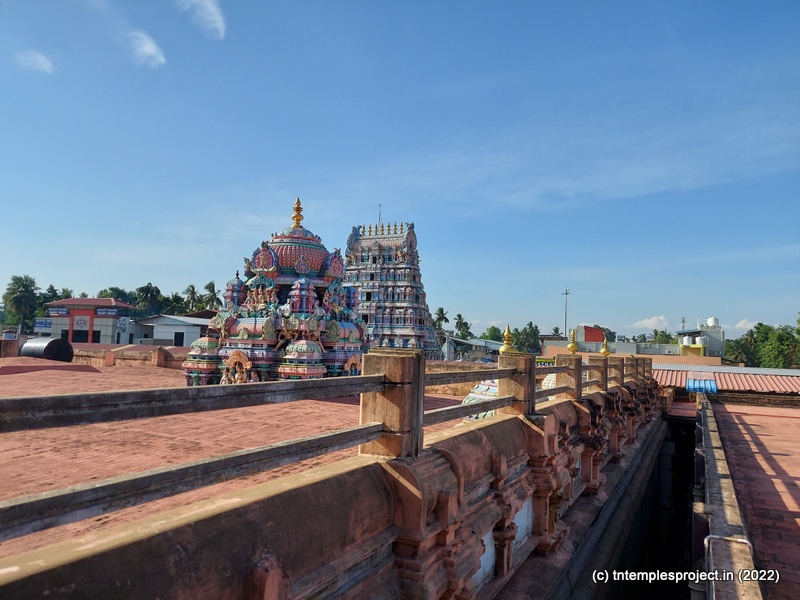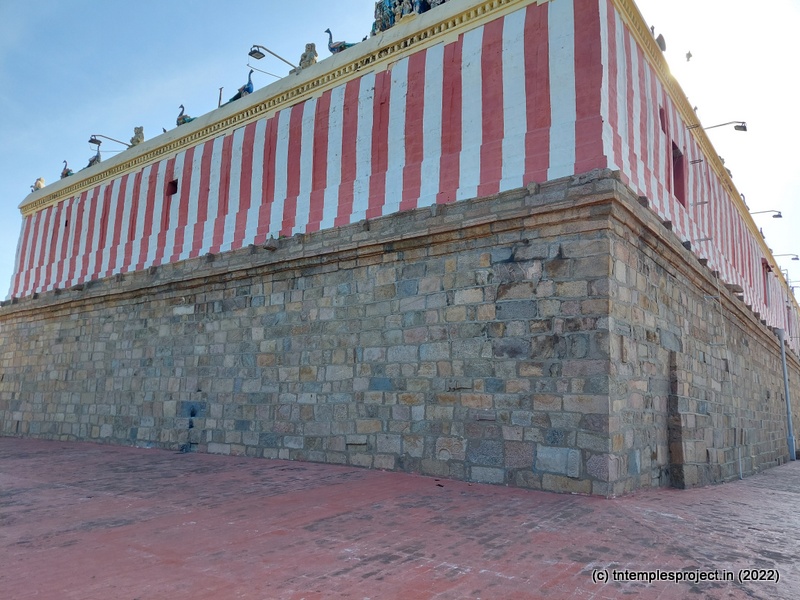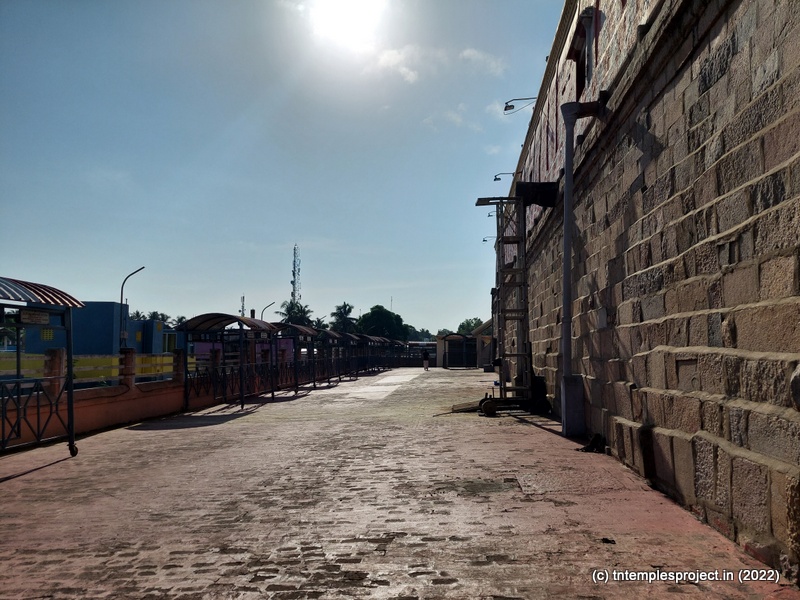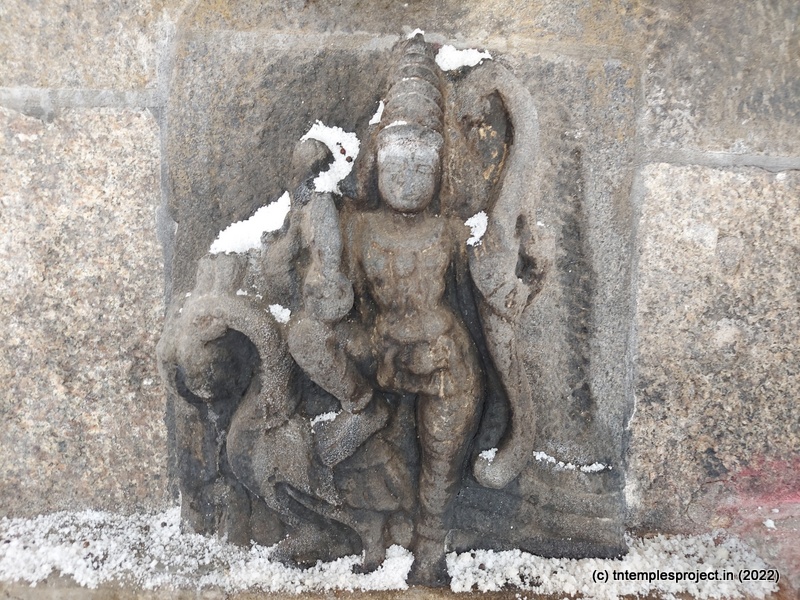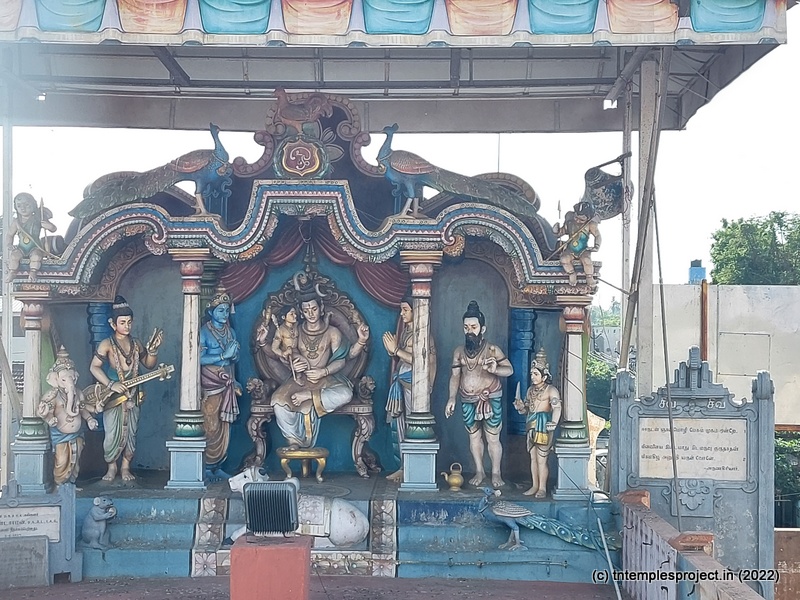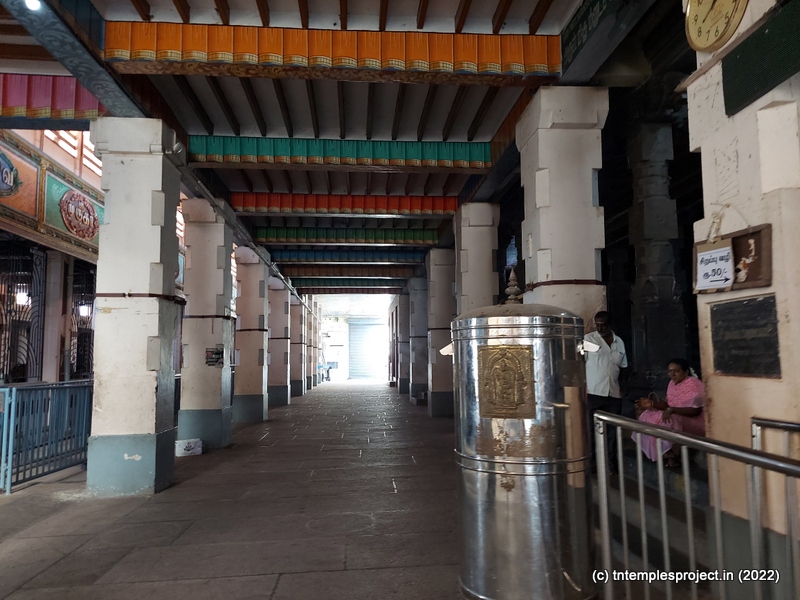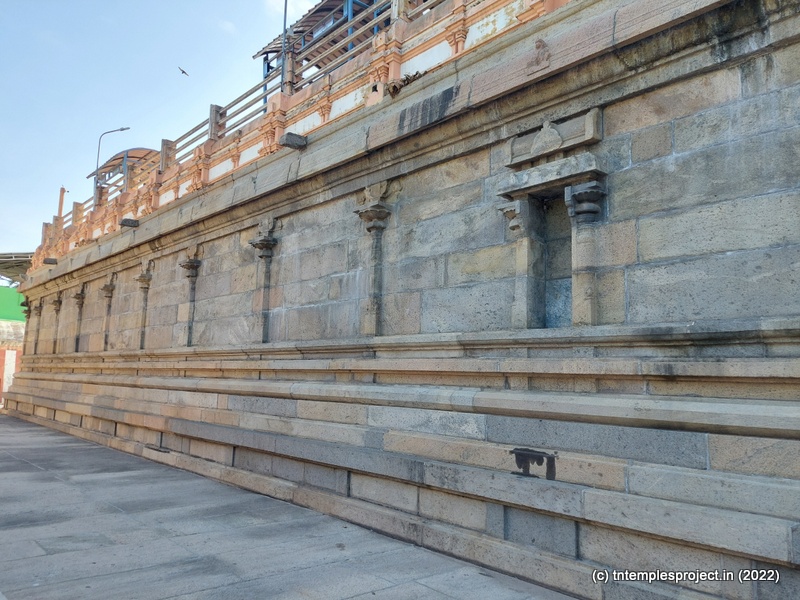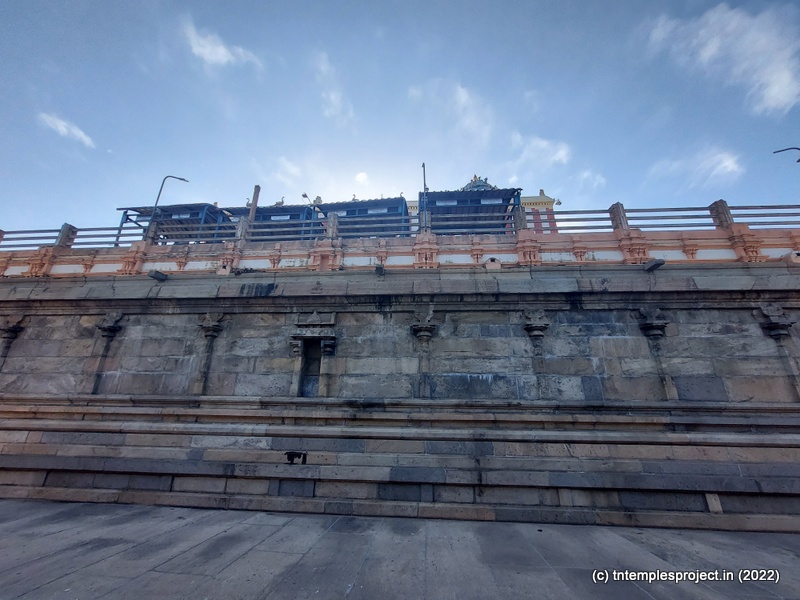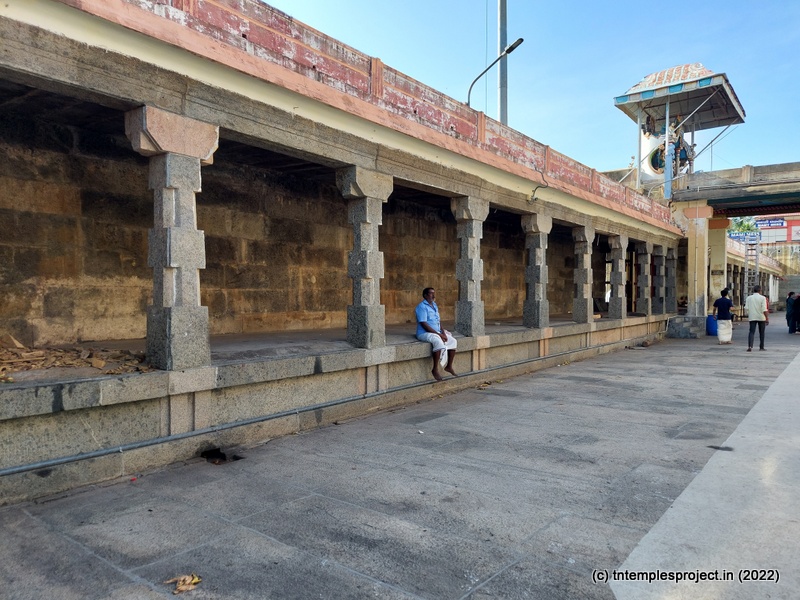Basic information about the temple
| Moolavar: | Swaminathar | Ambal / Thayar: | Valli, Deivanai |
| Deity: | Murugan | Historical name: | Tiruveragam |
| Vriksham: | Nelli | Teertham: | Saravana Teertham, Brahma Teertham |
| Agamam: | Age (years): | Timing: | 5 to 12 & 4 to 10 | Parikaram: |
| Temple group: | Arupadai veedu | – | |
| Sung by: | Temple set: | ||
| Navagraham: | Nakshatram: | ||
| City / town: | Swamimalai | District: | Thanjavur |
| Maps from (click): | Current location | Kumbakonam (9 km) | Thanjavur (35 km) |
| Ariyalur (42 km) | Mayiladuthurai (45 km) |
Location
Sthala puranam and temple information
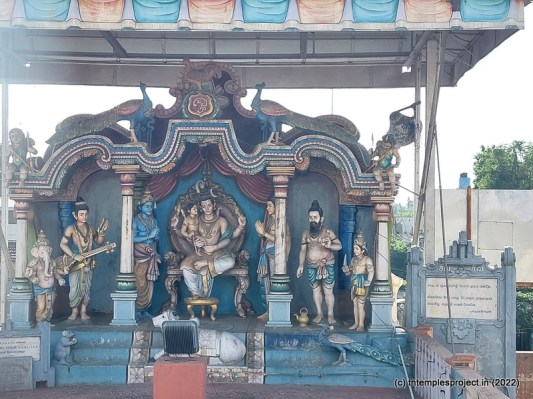
The entire district of Thanjavur has very few, if any, elevated areas. Therefore, this temple which is nestled on an artificial hillock in the village of Swamimalai, is special in its own way.
The Swaminathaswami Temple stands as the fourth among the six sacred arupadai veedu temples dedicated to Lord Muruga. With its rich mythology and architectural significance, this temple holds a unique place in Hindu beliefs and practices. The ancient name of this place is Tiruveragam.
There are two sthala puranams about this temple, both regarding Lord Siva receiving upadesam, in the form of the meaning of OM, the Pranava mantram, from Murugan here.
The first is relatively well known, and the story begins with sthala puranam of the Swarnapureeswarar in Alagaputhur (Arisi Karai Puthur) near Kumbakonam. During a visit to Kailasam, Brahma did not pay heed to Murugan. Annoyed by this, Murugan asked Brahma who he was, and the latter replied with pride that he was the creator of the world. But upon being asked the meaning of the Pranava Mantram, Brahma admitted to his ignorance in this regard, and for this, Murugan imprisoned him. When Lord Siva came to know of this incident, He asked Murugan to tell him the meaning, but Murugan replied, that because this was in the nature of upadesam (spiritual instruction), this could be done only if Lord Siva approached Murugan as a student. Of course, all of this was part of the Lord’s play – in equal parts, both indulging and testing His son, Murugan. To fulfil the requirement imposed by Murugan, Lord Siva arrived at Tiruvaiyaru, also known as Then Kailasam (southern Kailasam), accompanied by his attendants and parivara devatas (associated deities). From there, He walked His way Swamimalai, to receive instruction from Murugan.
The story of Lord Siva’s walk from Tiruvaiyaru to Swamimalai itself is a fascinating one, and involves several temples on that short route, which owe their sthala puranam in part to this story.
The other sthala puranam here, which is rather less known, involves sage Brighu, who once received a boon that the person who disturbed his penance would lose all his knowledge. The great power of the sacrificial fire emanating from the sage’s head reached the heavens, frightening the devas, who ran to Lord Siva for help. The Lord extinguished the fire by covering the saint’s head with His hand, but in the process, disturbed the sage’s penance and therefore lost all His knowledge! He then had to re-learn these from His son, Murugan, here at Swamimalai.
In any event, Murugan is called Swaminatha Swami here, since at this place, he is the Lord of the supreme Lord Siva Himself! Murugan here is regarded as appearing in different forms. When vibhuti (sacred ash) is applied on him, he appears as a learned saint, and when sandal paste is applied, he appears as Baladhandayudhapani, with the spear in one hand (representing Ichcha Sakti, Kriya Sakti and Gnana Sakti). The temple’s Teertham is said to have been created using this spear.
Bhoomadevi was relieved of a curse after praying here and has stayed permanently as an amla tree (nelli maram).
At the ground level of the temple premises is the separate temple / shrine for Lord Siva and Parvati as Sundareswarar and Meenakshi. To the right of this, are 60 steps – said to represent the 60 years of the Tamil calendar – and at the upper level is the separate shrine for Murugan. There are also niches and shrines for Murugan with his consorts Valli and Deivanai, Somaskandar, and Lord Siva and Parvati as Viswanathar and Visalakshi.
The presiding deity, Swaminatha Swami, is in the garbhagriham in the form of a 6-foot tall vigraham, adorned with golden armour, a crown, and his spear. Interestingly, some ardent devotees believe that the vigraham of Murugan in the main sanctum is the representation of the bana lingam form of Lord Siva, and the entire place is verily a Siva temple! Perhaps, as a result, the other shrines at the upper level follow the agamic positioning as that of a typical Siva temple.
The temple is also regarded as the Murugan parivara sthalam temple of the Mahalingaswami temple at Tiruvidaimaruthur.

Arunagirinathar has sung about management at this temple, in his Tiruppugazh. Poet Nakkeerar has also sung about Murugan here in the Tirumurugattrupadai.
The nearby village of Earagaram houses a Tevaram Vaippu Sthalam for Lord Siva as Skandanathar, linking it to Murugan. That temple is regarded as a sub-temple of the Swamimalai Murugan temple.
In the Skanda Puranam, there is a story about the origin of Swamimalai as a hillock. A demon was employed by sage Agastyar to move two hills to the south, to balance the world when all the sages and celestials attended the Siva-Parvati wedding in Kailasam. The demon kept the hills down at one place, while resting, but could not pick them up later. The sage noticed that this was because a young boy was standing on the hill, making it immovable. Realising this was none other than Murugan, the sage asked him to pardon the demon, and let that hill remain in place – this is regarded as Palani. The other hill is said to have been placed near Kumbakonam, at what has since become Swamimalai.
Devotees worship Murugan here as the solution to all of life’s problems, including getting married, childbirth, prosperity, longevity, education and wisdom, and general advancement in work and life.
Other information for your visit
There are several accommodation options (including resorts) for varying budgets, in and around Swamimalai. Alternatively, Kumbakonam is a great base as there are several temples of note worth visiting in and around Kumbakonam.
Contact
Gallery

